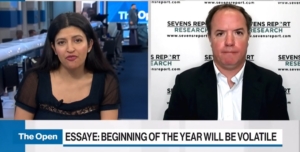Sevens Report – Is Conflicting Data Signaling a Shift in the Economy?
What’s in Today’s Report:
- Is Conflicting Data Signaling a Shift in the Economy?
- Weekly Market Preview: Earnings Take Center Stage (Lots of Key Reports This Week)
- Weekly Economic Cheat Sheet: Is Disinflation Continuing? (Key Inflation Stats on Friday)
Futures are sightly lower following a quiet weekend of news as markets look ahead to key earnings reports and economic data this week.
Economically, the only notable report was German IFO Business Expectations, which slightly beat estimates.
Debt ceiling headlines will increase this week as Republicans try to pass a debt ceiling bill, and if it fails to pass that will increase debt ceiling anxiety in the markets.
Today there is only one economic report, Chicago Fed National Activity Index (E: -0.02), and barring a major surprise that shouldn’t move markets.
Focus then will be on earnings, and especially the First Republic results after the close (estimates are $0.72/share). Markets will want to see stability from what’s viewed as one of the most vulnerable regional banks. Other notable earnings today also include KO ($0.65) and WHR ($2.44) which will give us insight into consumer spending.
Special Technical Market Update Delivered Today
The special technical report will be delivered via email later this morning.
Due to increased demand for more detailed technical insights from our subscribers, we have prepared a separate, special market update that provides detailed analysis of the current technical state of this market, including:
- Major stock indices
- Stock sectors
- Investment styles (growth vs. value) and
- Major trends in Treasury, commodity, and currency markets.
As the economy (and possibly markets) approach a tipping point and the Fed readies for the likely final rate hike, we can expect more volatility and conflicting fundamental economic data. Having high quality, plain-English technical analysis can help us better navigate this market.
Tyler Richey, Sevens Report CMT, has been the lead analyst on this special report, and we are all excited to deliver this value-add research to subscribers today.




